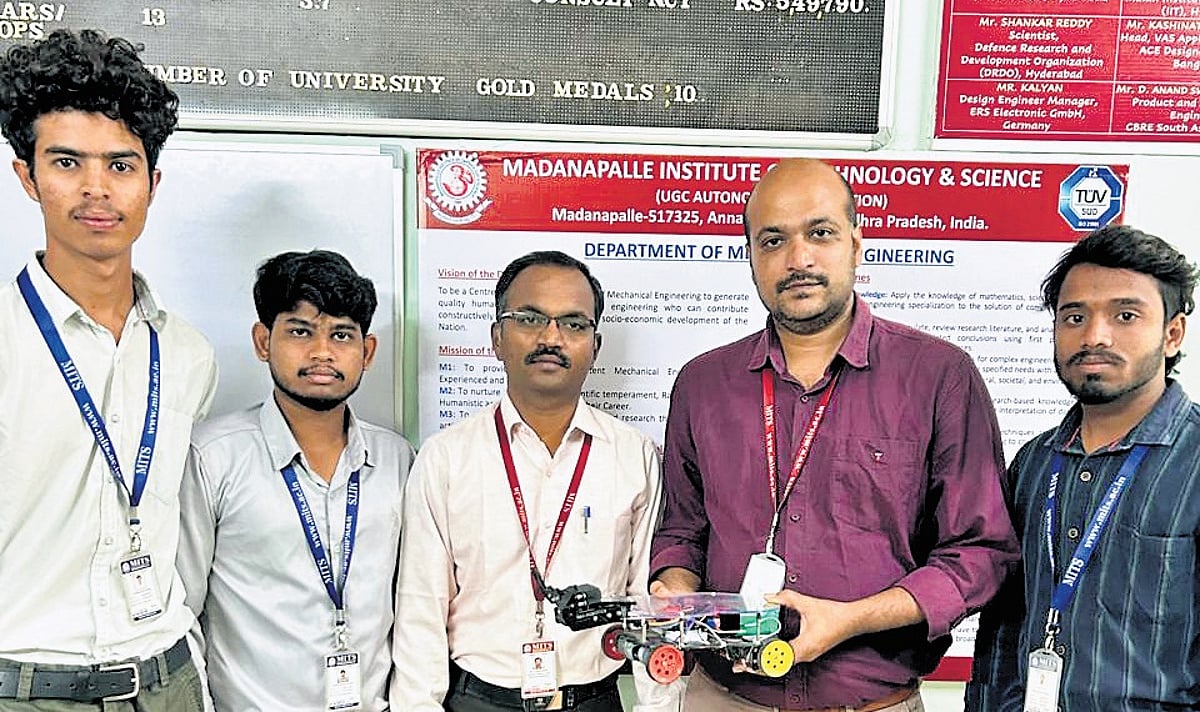Innovative Rescue Rover Developed by Students Could Save Lives in Disasters

In a remarkable demonstration of engineering ingenuity, three final-year Mechanical Engineering students from Madanapalle Institute of Technology & Science (MITS) have developed a multi-purpose autonomous rescue rover. This innovative device is specifically designed to operate in hazardous environments that are typically inaccessible to humans, such as those affected by earthquakes, industrial accidents, or fires.
A Life-Saving Innovation
The rover, crafted by students P Aslam Khan, P Mohammed Affan, and Shaik Shaik Basha, aims to mitigate loss of life during emergencies. Under the mentorship of Associate Professor S Baskaran and Assistant Professor Anantha Raman L, the team has turned classroom knowledge into a life-saving mechanism, showcasing the true potential of applied learning.
Advanced Features of the Rover
This cutting-edge rover boasts a robust design complemented by smart electronics. Powered by a 12-volt battery and an ESP32 microcontroller, it is capable of navigating through rubble, smoke, and toxic environments. Its main functions include collecting crucial data, detecting survivors, and assessing structural stability, all while keeping human rescuers safe from imminent dangers.
Real-Time Monitoring and Communication
The autonomous vehicle features advanced sensors that measure hazardous pollution particles and detect gas leaks. Its capabilities extend to effective communication, leveraging Wi-Fi and LoRa systems to transmit live data over distances of up to two kilometers. Furthermore, GPS tracking ensures precise mapping of challenging terrains, enhancing the overall effectiveness of rescue missions.
Future Developments and Applications
While the rover has successfully completed lab-scale testing, the team intends to enhance its field readiness by improving obstacle avoidance, sensor functionality, and integrating real-time data logging. Its open-source design also presents a cost-effective solution for emergency services, research institutions, and industries focused on safety and environmental monitoring.
As noted by Anantha Raman, “This project truly demonstrates the power of applied learning.” The students not only implemented their engineering knowledge but also embraced social responsibility. Their efforts exemplify how innovation can significantly contribute to disaster management and safety, potentially saving countless lives in critical situations.